Crucial T700 Gen5 2TB SSD Review: PCIe 5.0 & NVMe 2.0 For M.2!
Phison’s new E26 controller may be the hottest thing in storage at the moment, but Crucial’s here to cool its jets with a big new heat sink and some Micron storage ICs that contribute as little as possible to the heat problem…potentially leaving nothing but glorious performance and improved reliability for us to observe.
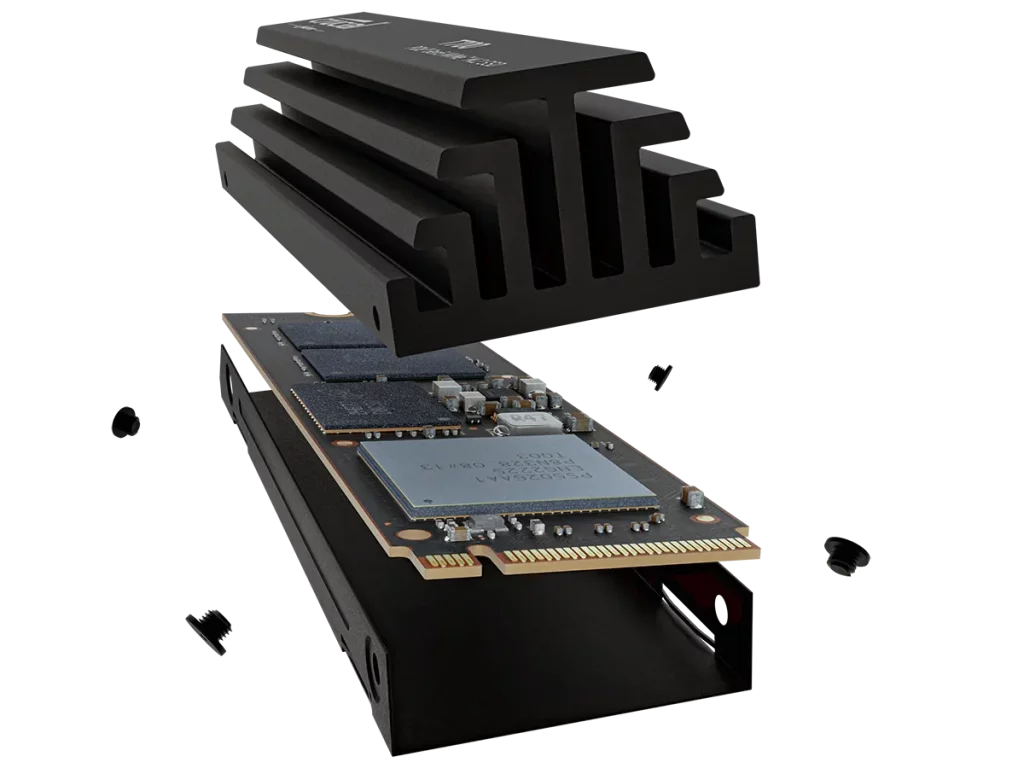
Rumors regarding the NVMe heat monster that was to be released following AMD’s Zen 4 announcement may have even been overstated, as Crucial is also willing to offer a drive that relies upon nothing more than the M.2 heat spreaders that came with our motherboards to reduce those hot spots. Most of us have been treating motherboard-supplied M.2 sinks as aesthetic, and testing both versions of the drive will certainly help us determine whether our motherboard-supplied M.2 cooler is really up to snuff.


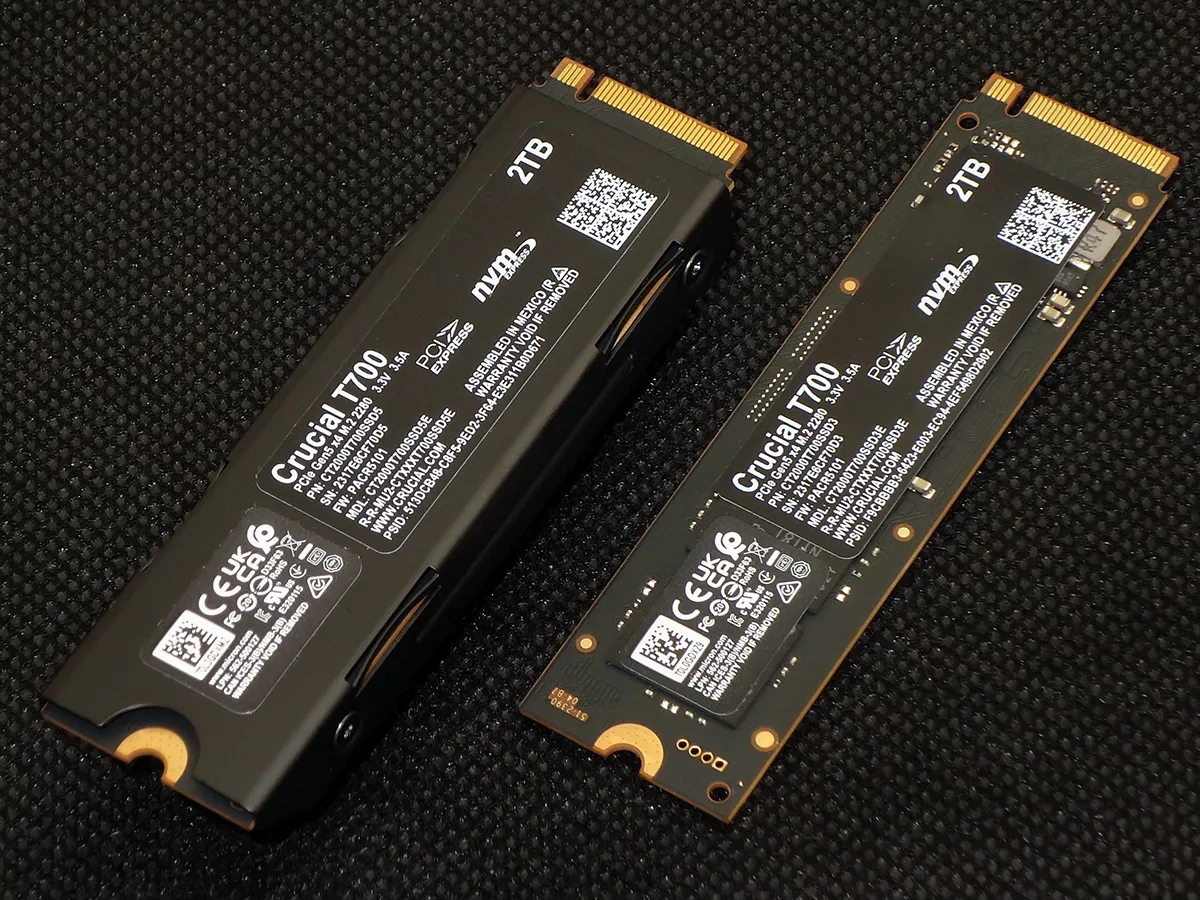
The T700’s top (heat sink) side features a tiny Phison PS6126 PMIC in addition to the firm’s PS5026-E26 controller, with four of Micron’s 232-layer TLC NAND getting unfamiliar 3FC2D-NYI8I markings. The D8CJG DDR4 IC represents 4GB (sold as 32 gigabits) of cache for this 2TB drive, though Crucial claims only 1GB of cache for every 1TB of capacity.
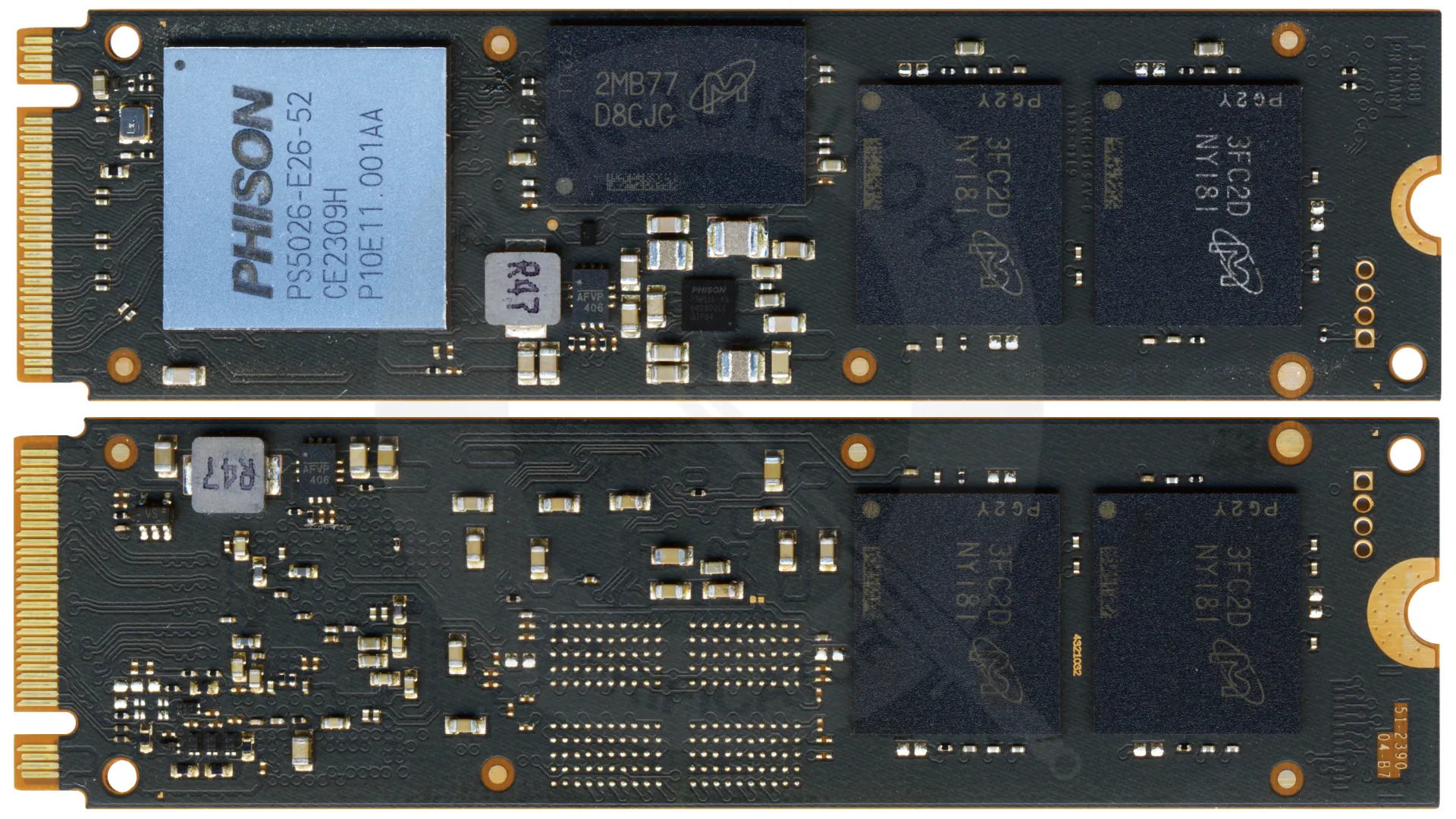
The model numbers for Crucial’s heatsink-equipped T700 drives end in D5, while the model numbers for bare drives end in D3.
| Crucial T700 2TB w/heatsink CT2000T700SSD5 | Crucial T700 2TB non-hs CT2000T700SSD3 |
| M.2 2280 | M.2 2280 |
| 2.0TB | 2.0TB |
| PCIe 5.0 x4 (NVMe 2.0) | PCIe 5.0 x4 (NVMe 2.0) |
| Phison PS5026-E26 | Phison PS5026-E26 |
| Micron 232L TLC | Micron 232L TLC |
| DRAM | DRAM |
| 1,200 TBW | 1,200 TBW |
| 5-years | 5-years |
We won’t be trying to pinch off four of Raptor Lake’s sixteen PCIe 5.0 lanes from its graphics card slot to serve the T700’s Gen5 interface in our initial review, but will instead rely upon the solidity of ASRock’s X670E Taichi serving the AMD Ryzen 9 7950X’s superior connectivity. Our standardized motherboard test platform keeps everything cool and organized.
| Test Hardware | |
| CPU | AMD Ryzen 9 7950X: 16C/32T 4.5-5.7 GHz, 64MB L3 Cache, Socket AM5 |
| CPU Cooler | Alphacool Eisblock XPX CPU, VPP655 with Eisbecher D5 150mm, NexXxoS UT60 X-Flow |
| Motherboard | ASRock X670E Taichi, Socket AM5, BIOS 1.11 (10-21-2022) |
| Graphics | Powercolor Red Devil Radeon 6750 XT: 2324-2623MHz GPU, 12GB GDDR6 |
| Power | be quiet! Dark Power Pro 10 850W: ATX12V v2.3, EPS12V, 80 PLUS Platinum |
| Memory | G.Skill F5-6000J3038F16GX2-TZ5N 2x16GB (32GB) DDR5-6000 CL30-38-38-96 1.35V |
| Sound | Integrated HD Audio |
| Network | Integrated Wi-Fi |
| Graphics Driver | AMD Adrenalin Edition 2022.10.1 |
Speaking of cool and organized, thermal throttling was the first thing we noted about Crucial’s heatsink-equipped T700 2TB. This drive does that at 81° in an effort to avoid reaching its 90° shut-down temperature, but our old Gen4 drive was already reaching around 70° with our test system fans set to automatic mode. Since our front-mounted radiator fans are the only fans to cool the upper motherboard area of our test platform, producing fair results required us to set those fans to their maximums.
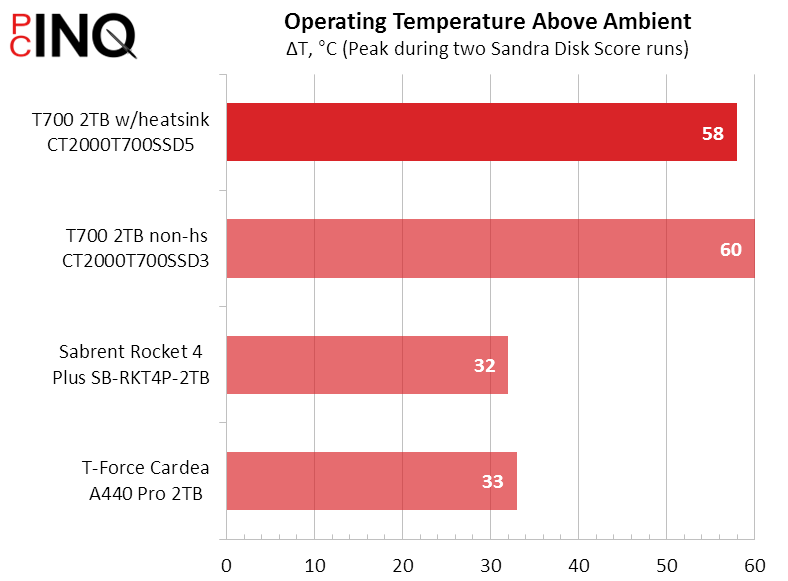
The thermal issues of Phison’s E26 PCIe 5.0 storage controller aren’t as severe as pre-launch rumors would have us believe, but they’re still significant. The non-heatsink version of the T700 barely stays under its threshold temperature, but does so using nothing more than the flat chunk of aluminum that the X670E Taichi includes as a heat spreader. As a reminder, we recently reviewed a closed-loop CPU liquid cooler with an unusual feature meant to address these concerns:

Sandra’s overall performance score appears at a glance to reflect the difference in temperature, but the scale is different. Moreover, this score indicates that all the industry excitement that built up following AMD’s former forward-looking statement really is deserved. We see a small hiccup in bandwidth consistency between the heatsink and non-heatsink version, but it may be that the non-heatsink version is simply a better unit?
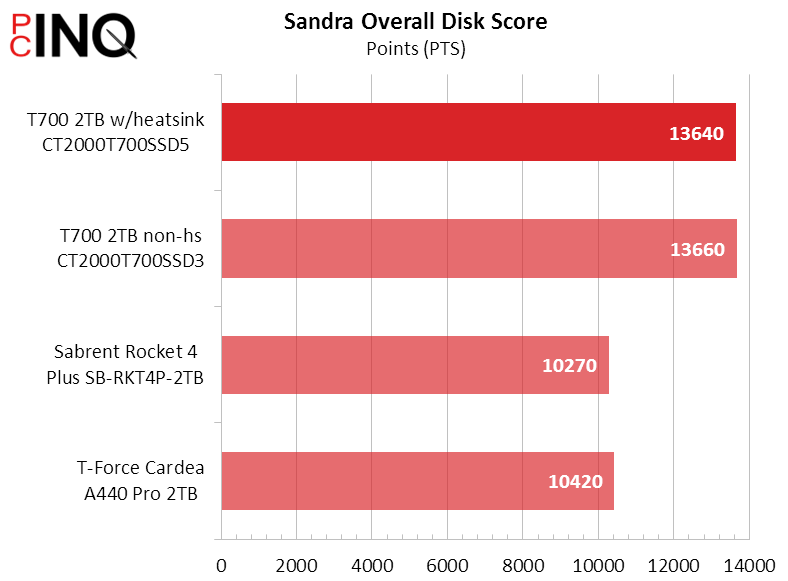


AIDA64 likewise shows a little performance inconsistency, but both versions of the T700 retain commanding positions over our fastest Gen4 drives. Oh, and in case you’re wondering, retests showed that the differences seen here between the heatsink and non-heatsink-equipped drives are at least reproducible.


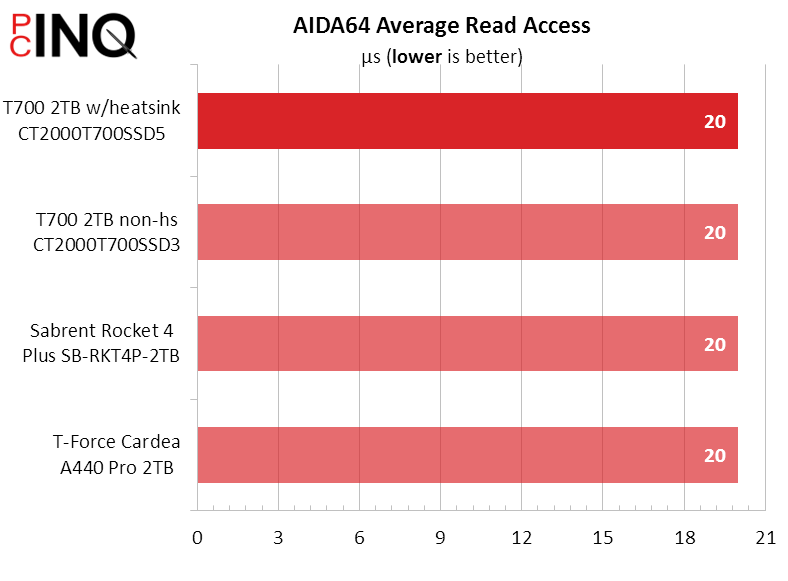
3DMark Storage is based on real-world transfer activity, even if it’s a synthetic app responsible for reproducing those transfers. It shows Sabrent’s PCIe 4 model following the PCIe 5 drives a little more closely than the previous pure-synthetics, but the new drives still win by enough margin to get our attention.

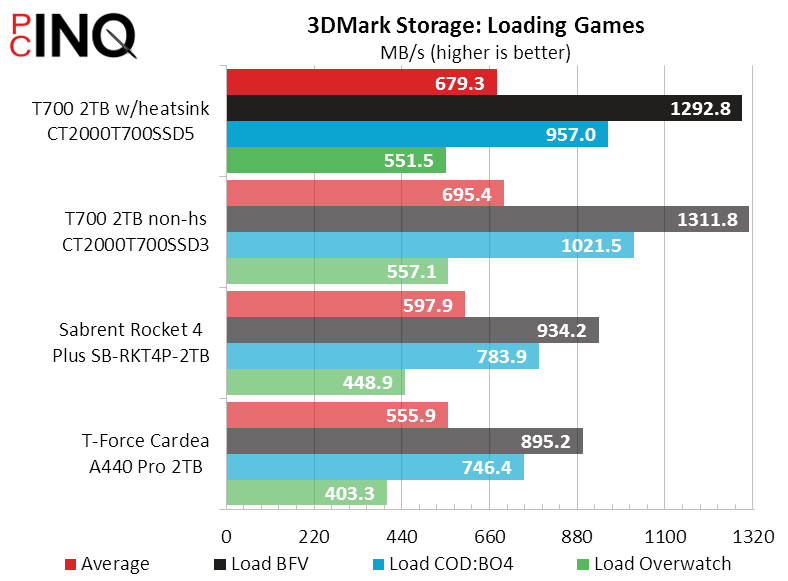

PCMark also attempts to replicate the patterns of real-world apps, and it too shows the Gen4 Sabrent drive beating expectations while still living in the dust of the Gen5 drives.



ATTO shows that Gen5’s gains in quickness are not nearly as large as its gains in bandwidth, with 128K reads up around 15% but 4k reads up by only around 11%, and 128K writes up by around 75% but 4k writes up by only around 20%.
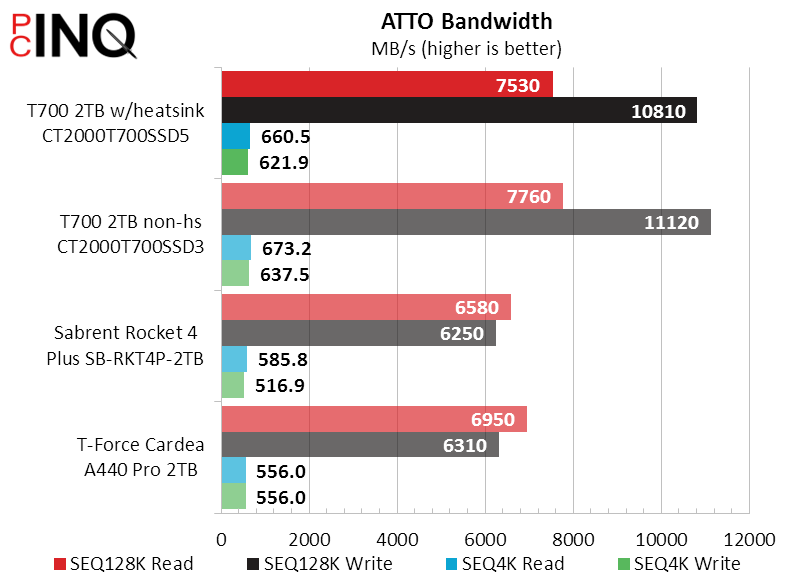

Crystal DiskMark shows 4k writes barely up at all, while 1M reads and writes both went through the ceiling. Latency gains are also beat expectations in this metric.
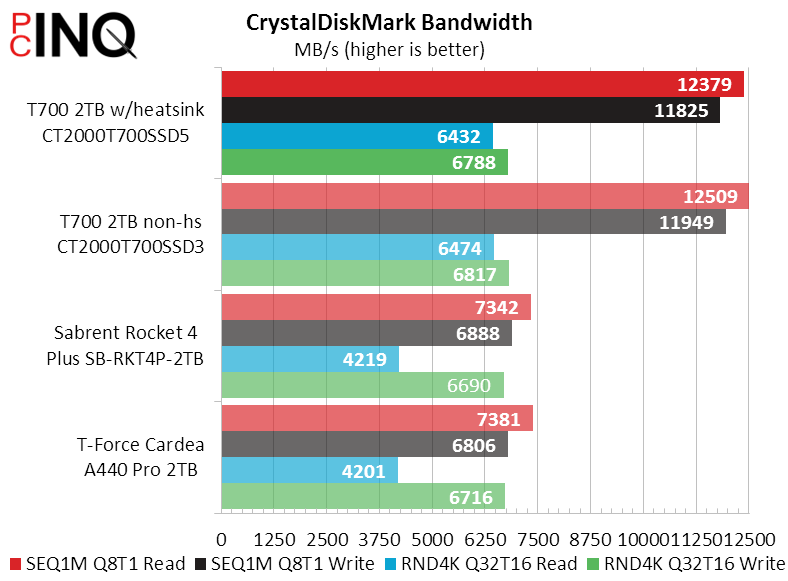


Diskbench is something even a newbie should be able to understand: It copies a gigantic 30GB file from one part of the drive to another in only a few seconds. It obviously loves the T700’s new Gen5 interface: We’d be concerned about a broken test platform if it didn’t.
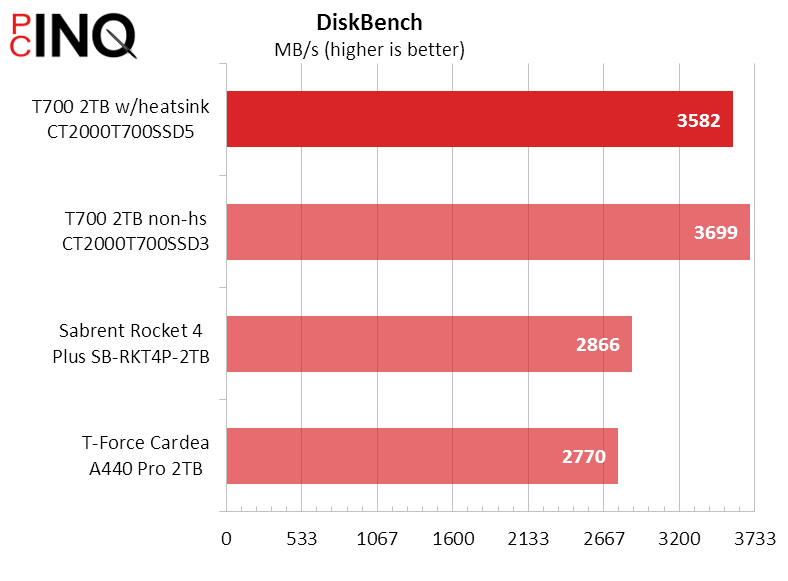
Our average performance chart eliminates the unrealistic deltas of certain narrow-function synthetics by relying only on real-world transfer patterns, and shows the T700s gaining only around 20% over the fastest previous-generation drives on average. As if the term “only 20% on average” really makes sense? Performance enthusiasts have been known to spend hundreds of dollars on DRAM just got get a 2% gain, and storage gains ten times that size usually take more than a single generation to be realized.

Curious about how much of the performance gain is really due to advancements other than the PCIe interface, we stuck the heatsinked version of the T700 in a PCIe 4.0 slot and ran Crystal DiskMark again. Bandwidth gains almost disappeared, but latency reductions remained. These results confirm AMD’s earlier hype regarding PCIe 5.0’s advancement in storage performance.



We could conclude that Crucial’s T700 is a giant technological leap compared to the previous generation of drives, but it’s not the only PCIe Gen5 drive available. It’s not even the only available drive to use this controller and NAND flash ICs. And because it’s using the same hardware, the long list of feature advancements that Crucial published regarding the T700 series logically applies to its Gen5 competitors.

Yet Crucial’s T700 is loaded with cutting edge memory from its parent company Micron, so we can’t think of any drive brand more deserving of an award for that bit of innovation. After all, the manufacturer of its PCIe 5.0 NVMe 2.0 controller doesn’t have a drive brand.
| Up to 70% faster than top previous-gen drives Available with or without integrated heat sink Adaptive thermal protection (81-90 °C) Five year / 1,2000TBW Warranty | Up to 70% costlier than top previous-gen drives Up to 80% hotter than top previous-gen drives |
| The T700 is fast enough to make fans of us, but its PCIe 5.0 NVMe controller is hot enough to potentially demand fans of its own. | |
We didn’t mention the actual price because that may change the minute this is published, but Crucial has been listing its 2TB T700 without heatsink for $340, and its heatsink-equipped variant for $370. While those of us who own Sabrent’s drive are not completely unfamiliar with $30 heat sinks, we’re confused as to why a company as large as Crucial would think that a chunk of extruded aluminum should cost as much as a carefully soldered-together heat pipe design produced by a low-volume manufacturer. Then again, we don’t expect pre-launch pricing to stick around very long after the official product release.



